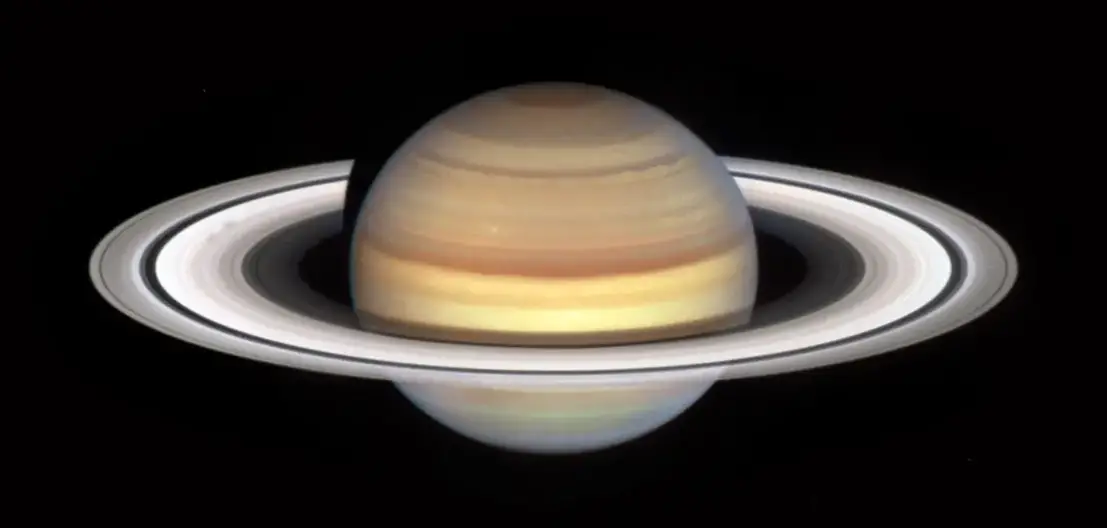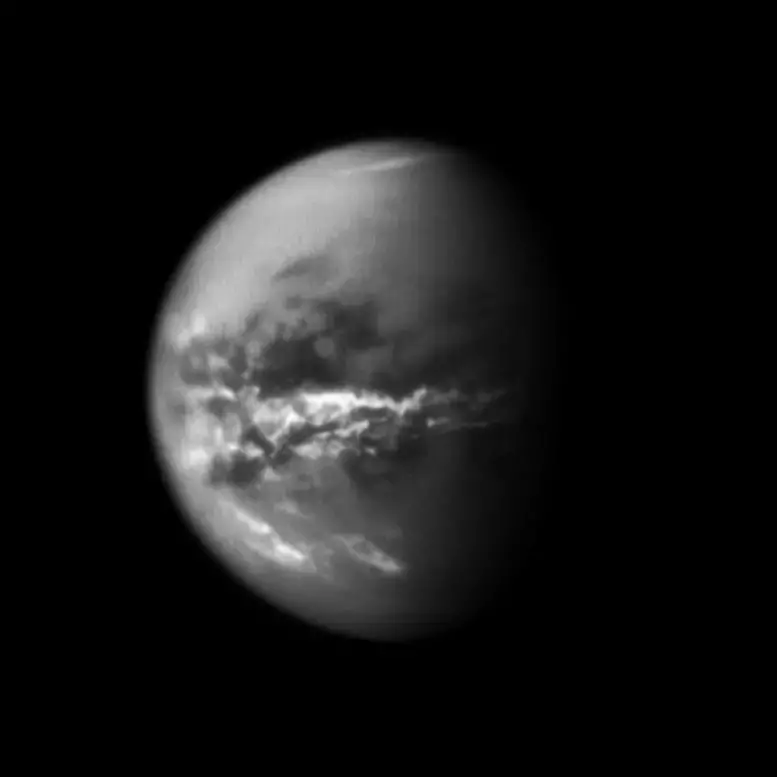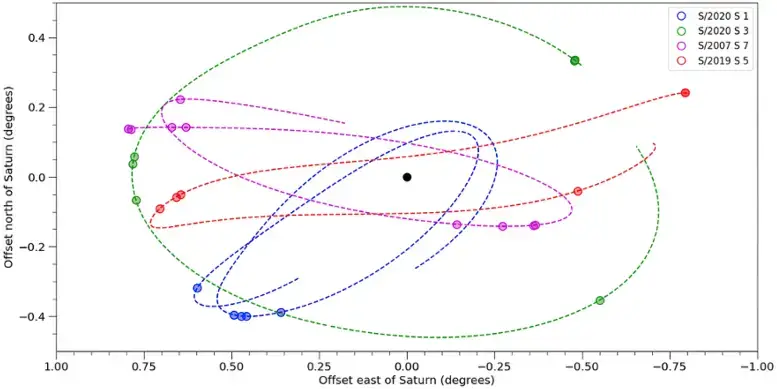NASA’s Hubble Space Telescope captured this image of Saturn in February 2023. Saturn has regained its title as the planet with the most moons in the solar system following the discovery of 62 new moons, giving it a total of 145, thereby surpassing Jupiter by 50. Credit: NASA, ESA, Amy Simon (NASA-GSFC), Alyssa Pagan (STScI)

Scientists have discovered 62 new moons orbiting Saturn, bringing its total to 145 and surpassing Jupiter’s count of 95. Using a technique called “shift and stack,” the international research team, led by Edward Ashton, found moons as small as 1.5 miles in diameter. The findings could provide insights into the history of collisions within Saturn’s orbit.
Jupiter is the King, Earth is teeming with life, Venus is a weird, spacecraft-crushing hellhole, and now Saturn has the most moons. Again.
Jupiter sat atop the podium as the planet with the most moons for a while. But with the discovery of 62 more moons, Saturn has surpassed Jupiter as the planet with the most natural satellites and reclaimed the top spot.
The new moons give Saturn a total of 145, besting Jupiter by 50. The pair are in a back-and-forth battle for most moons. Jupiter has 95 right now (astronomers announced 12 new ones in February,) but astronomers are getting better at spotting small, irregular moons, and Jupiter’s total could grow again. While Saturn is now the only planet with more than 100 moons, that could change.
An international team of scientists found the moons. Edward Ashton, a post-doc at Taiwan’s Academia Sinica Institute of Astronomy and Astrophysics, led the research. They’ll publish their results in a couple of months. The work features a new method of searching for moons that’s been used for Neptune and Uranus but, up until now, not for Saturn.

This image of cloud activity on Titan was captured by Cassini. Credit: Credit: NASA/JPL/SSI
“Tracking these moons makes me recall playing the kid’s game Dot-to-Dot because we have to connect the various appearances of these moons in our data with a viable orbit,” explains Edward Ashton, “but with about 100 different games on the same page and you don’t know which dot belongs to which puzzle.”
The researchers used a technique called shift and stack to find the moons. It senses smaller, fainter moons by shifting a set of sequential images at the rate that the moon is moving across the sky. Then data is combined by stacking the images, which enhances the moons’ signals. Ashton and his colleagues used observational data from the Canada-France-Hawaii Telescope on Mauna Kea. They took sequential images during three-hour spans between 2019 and 2021 and detected moons as small as 2.5 km (1.5 miles.)
The International Astronomical Union (IAU) is careful about recognizing new moons. A single observation doesn’t meet the threshold, as that could simply indicate an asteroid passing by. Instead, an object has to be tracked over time before the IAU will recognize it as a moon. Some of the new moons were observed in the past, but not enough to be confirmed.
The 62 new moons are all irregular moons. Their orbits are irregular, meaning they’re distant and inclined and often eccentric or retrograde. Astronomers think these are captured objects that Saturn pulled in its gravitational grip long ago.

This image shows the paths of four of the new moons as they orbit Saturn (black circle at center) during the period 2019-2021. The coloured dots mark the observed position for each moon; the dashed curve shows the orbit that connects them. Credit: University of British Columbia
Moons tend to find themselves in coordinated orbital groups based on orbital tilt. Saturn has three of these groups of moons: The Inuit, the Gallic, and the Norse, with the Norse group being the largest. All of the new moons belong to one of these groups.
Astronomers think that many of Saturn’s moon groups are the results of collisions between moons that were originally captured. By finding more of the gas giant’s moons, scientists hope to piece together the history of those collisions.
Dr. Brett Gladman, one of the researchers responsible for finding the new moons, is a Professor of Astronomy and Astrophysics at the University of British Columbia. “As one pushes to the limit of modern telescopes, we are finding increasing evidence that a moderate-sized moon orbiting backward around Saturn was blown apart something like 100 million years ago,” Gladman said.
Gladman, Ashton, and co-researcher Matthew Beaudoin published a paper in 2021 presenting evidence of that collision. In that work, they estimated that Saturn has 150 (plus or minus 30) moons as small as 2.8 km (1.7 miles) in diameter. They said that the size distribution of the moons ” … is the signature of a relatively recent (few hundred Myr ago) collisional event in Saturn’s retrograde irregular population.”
Saturn’s moons continue to attract the attention of curious astronomers. Their size ranges from the massive Titan, larger than the planet Mercury and the Solar System’s second-largest moon, to swarms of tiny moonlets. Astronomers think there are thousands more of these moonlets concealed in its ring system. There could also be hundreds more kilometer-sized objects orbiting the gas giant, waiting to be discovered.
Adapted from an article originally published on Universe Today.





